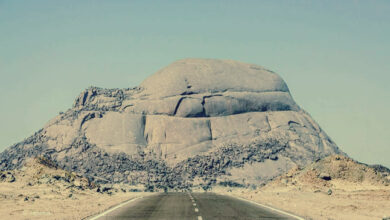This article is part of Al-Masry Al-Youm’s weekly “Endangered Species” series, covering Egypt’s endangered flora and fauna.
Since prehistoric times, people all over the planet have used plants’ curative properties as medicinal remedies for various ills. More than half a million species of plants have been identified on earth, of which approximately 10 percent, mostly growing in the wild, are used for medicinal purposes.
Egypt, due to its strategic location at the junction of four bio-geographical regions, is home to a wide variety of flora. Medicinal plants in Egypt have been part of the country’s natural and cultural heritage for thousands of years. In desert countries, like Egypt, communities live far away from each other, and thus many are almost deprived of proper medical infrastructure, which contributes to the major role played by traditional healers even now.
Today, Egypt is home to 384 different species of medicinal plants found in the Mediterranean coastal region, in the deserts, in the oases of the Libyan Desert and in the Sinai Peninsula. The area of Saint Catherine is one of Egypt’s most fertile grounds for medicinal plants, and no less than 102 species are to be found in this 4,000-square-kilometer protectorate. But here plant life is facing various threats, and a decline in the variety of species has been observed. Also, 16 of the 102 medicinal plant species found in the southern part of the Sinai Peninsula are endemic, which means that they have to be protected, collected and replanted in order to avoid their complete disappearance.
In order to preserve this natural and cultural heritage, the NGO Medicinal Plants Conservation Project, supported by the National Conservation Sector, was created in 2003 in Saint Catherine to protect native medicinal plants and also include the local Bedouin communities.
The project's manager, Adel Abd Alla Soliman, says its goal is to “develop and empower the local communities to conserve these plants, use them in a sustainable way and benefit from them.” He adds that medicinal plants have been traditionally used by local Bedouin communities as a source of affordable and accessible health care. As a consequence, some of the elderly possess an immense amount of knowledge regarding the properties of these plants and their curative values.
Back when the NGO was established in 2003, Soliman met with “Sheikh” Ahmed Mansour from the Gabaleyya tribe, who is considered a doctor by the locals. He sat with Soliman and told him that he had much knowledge of wild medicinal plants that he wanted to transfer to younger generations to keep folk medicine alive despite the strong attraction young Bedouins have towards modern medicine. Together, they set up a month-long workshop which attracted 20 young people from the ages of 8 to 16 and the sheikh oversaw the educative curricula.
Educating young people on the use of medicinal plants to keep traditional knowledge alive is one aspect of the NGO’s work on the ground; they also carried out a threat analysis and threat reduction assessment for the plants in the governorate. Soliman explains that the result of this survey was unexpected: “We discovered that the main cause for the reduction in medicinal plants was the feral donkey, which eats whatever plant it finds and uproots the plant completely before swallowing it.”
Because of the severe drought in the area of Saint Catherine and the rarefaction of plants in general, these feral donkeys, whose population is estimated at 215, became the number one threat for medicinal plants. “We encouraged Bedouins to help us catch these donkeys, we would give them a LE150 compensation for each donkey caught, and then we started giving them to the Giza Zoo,” Soliman says.
The second major threat to the plants was destructive harvesting habits by the Bedouins that prevent regrowth. The NGO organized lectures and educational programs to address this issue. The other threats, according to Soliman, were “overgrazing of sheep and goats, tourist intrusions which crushed plants and unregulated collection of plants by scientific researchers.”
In order to preserve the wide variety of medicinal plants present in Saint Catherine, especially the 16 endemic species, the NGO has applied in-situ and ex-situ conservation.
“In-situ conservation means that the plants need to be cultivated in the same ecosystem,” explains Soliman, who specifies that the NGO has developed eight in-situ conservation sites. In order to come up with a satisfying ex-situ conservation process in the shape of a farm, the soil and the sources of water have to be analyzed to make sure the plant can thrive in this habitat. “The NGO has created seven of these farms, which are relatively small, ranging from half a feddan to one feddan in size."
There is a third aspect to conservation efforts called the “restoration program,” which consists of replanting medicinal plant species in areas where they previously thrived but are no longer found. Seeds from some of the medicinal plants are sealed in tubes and protected at the gene banks in Cairo and in El-Arish so the species are not lost with time. “We preserve 411 specimens representing 170 medicinal plant species in the Cairo Gene Bank, and 16 specimens in El-Arish,” says Soliman.
In 2007, the NGO decided to improve the quality of the products, mainly the dry processed medicinal plants, in order to bring revenue to the communities involved in the project. “At first, the Bedouin sold 1kg of dry herbs for LE15, but it was dusty and filled with wood chips. So I offered the idea of producing smaller quantities of much higher quality, which they could sell for LE400 per kilogram.” The NGO applied for an official certification for organic production and then got a licence from the Ministry of Solidarity allowing them to market the products.
Today, the NGO’s shop in Saint Catherine offers a range of high-quality products like candles filled with medicinal dried herbs, herbal soaps, honey and teas and dried herbs in beautiful glass containers.
“With these products, we improve the livelihood of the people while conserving the natural resources,” says Soliman.




